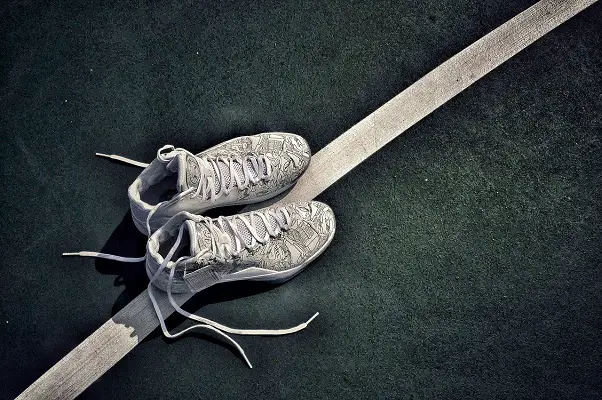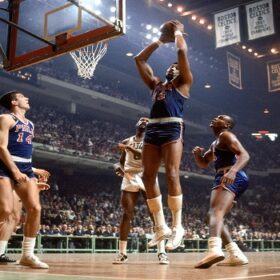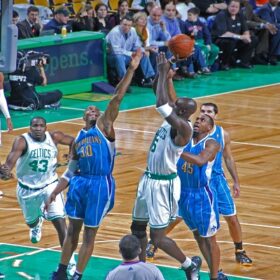I was seven years old the first time I learned to tie my shoe by myself. It was one of the happiest days of my life because I felt I achieved something. It was my dad who taught me how to tie my shoe. The reason why he taught me to tie my shoe is that he was tired of bending his knees every time I loosen the tie on my shoe.
When I grew older, I realized that learning to tie my shoe is essential because this skill I’ve learned will be used every day in my life. I used this skill in many circumstances in my life, especially when I started to fall in love with basketball.
There are injuries that you can encounter because of improperly lacing up your basketball shoes. Knowing the correct way of lacing up your shoes will bring the best out of you. Plus, it will prevent you from getting some serious injuries.
What To Consider?
There are a few things you need to consider before picking what method you will use. These are things to consider:
- How many minutes would you play?
- Do you have wide or large feet?
- Are you playing an organized game or a pickup game?
- Do you feel any pain in your ankle lately?
- Will you consider to play at your highest level?
These are a few things you probably need to consider before choosing what method you will use to tie your shoes. Lacing up your shoe isn’t just lacing up your shoe. Consider the lacing of shoes as your priority as well because mistakenly laced shoes can cause injuries.
Try our different methods below and see what your feet would feel. People have diverged preferences for how their shoes should feel, so we cannot come up with a conclusion on what your feet should feel when you try one of each method. Try experimenting some of these methods to see which of these methods works perfectly for you.
Different Ways To Tie Your Basketball Shoes
These are the different ways to tie your basketball shoes. Each distinct ways have different purposes. The first method we’ve featured was the basic and can be used in any situation but try to consider the other methods to see what works well for you.
Method #1 – The Basic
If you wanted a simple method and easiest way to learn to tie your shoes, this method is the one you should consider. Probably this was the method taught by your mom or dad when you are a little kid. You can use this method in any situation and can compatible with any lace-up basketball shoes.
We called it “the basic” because the method is a piece of cake. All you need to do is to lace it in a crisscross pattern to the top of the shoe. Tie a basic knot and make a bunny ear with each lace. Crisscross the loops, tuck one under the hole that has been created, and then pull.
This method is adequate for street basketball games, pickup games, or when playing with your friends. You can use it in an organized game, but there are other best options below.
Check the video below if you have no idea what this method is:
Method #2 – Wide Feet Method
If you have wide and large feet, then this method is basically for you. You will lace them like the basic. Start at the bottom eyelets on the way to the top eyelets. The only difference here is you will skip one set of eyelets. Doing this method will give your large feet more room in the shoes.
Make sure to tie them in a comfortably tight manner. It should be tight so the knot won’t lose easily, but it should be also comfortable so your feet won’t get irritated while running on the floor.
Check the video below to see how this method was done:
Method #3 – The Ultra Lock
This method is for basketball players who play in an organized game. An organized game means playing in a 12 minutes quarter game. It could be a college basketball game, intramural games, or even professionally.
First is to tie them like in method #1, start at the bottom eyelets and lacing it in a crisscross pattern up to the top eyelets. When you get to the top, place it on the other side and pull it through, and you will have one bugs bunny ears, one on each side. Cross the laces, and put it through each bugs bunny’s holes.and then pull it nice and tight. Then tie the shoe like you normally do. This method will give you strong support and protection on your ankles. It will prevent you from getting severe injuries.
Check the video below for a concise instruction of this method:
How Tight Should Your Basketball Shoes Be?
A poorly tied basketball shoe can put you at risk of injuries. Basketball will test your physical strength. You will do a lot of jumping and changing direction at a very high speed. Plus, you will run around the court for many minutes.
Your basketball shoes must be properly laced up to prevent serious injuries. It should be enclosed and tight to ensure that your risk of getting an ankle sprain is lessened. Aside from making sure your lace is tight, consider making sure to tie your shoe where you are comfortable. In other words, lace your basketball shoe as tight as possible where you feel comfortable and safe at the same time.
Maintenance and Care for Shoe Laces
Basketball shoes, while designed for rugged use, demand consistent care, and their laces are no exception. The longevity and efficacy of your shoe laces depend largely on how you treat them. Laces that are well-maintained not only look neater but also function optimally, ensuring that your shoes stay firmly on your feet during those critical game moments.
Choosing the right lace material is paramount. While cotton laces offer a classic feel and good grip, they may wear out faster especially if you play regularly. Synthetic laces, on the other hand, tend to be more durable and resistant to stretching. Regardless of the material, it’s important to occasionally inspect laces for signs of wear and replace them when necessary.
Cleaning laces can prolong their lifespan. Remove them from your shoes and soak in a solution of mild detergent before rinsing and laying them flat to dry.
This not only helps in removing accumulated dirt but also prevents potential weak points from developing. Remember, a snapped lace in the middle of a game can disrupt your performance, so giving them a little attention can go a long way.
The Impact of Proper Shoe Tying on Performance
The act of tying your basketball shoes might seem trivial, but its impact on your in-game performance is more profound than one might assume.
A well-tied shoe ensures a snug fit, maximizing the shoe’s design benefits and complementing your foot’s natural movements. This can significantly reduce the chances of in-game mishaps and injuries.
A properly tied shoe enhances agility and speed on the court. When your foot is securely anchored, you can make sharper cuts, jump with more stability, and accelerate without the fear of your shoe coming loose or causing discomfort.
This can be the fine line between making that game-winning move or missing an opportunity due to a shoe malfunction.
Lastly, the stability offered by correctly tied shoes ensures optimal grip on the court surface. This grip is essential for preventing slips and falls, especially during intense play or in conditions where the court might be slick.
In essence, the manner in which you tie your basketball shoes directly correlates with your on-court safety and efficacy, making it an indispensable aspect of your game preparation.
Final Words
Never enter the court without correctly lacing your shoes. It will affect your game and prevent you from playing at your best. Improperly lacing up your shoe can cause you many unwanted injuries. Injuries could be severe or mild. Make sure to take time to tie your shoe before playing. It will keep your feet and ankles unharmed.
Do you have your unique way of tying your basketball shoes? If so, please let us know in the comments section below!






